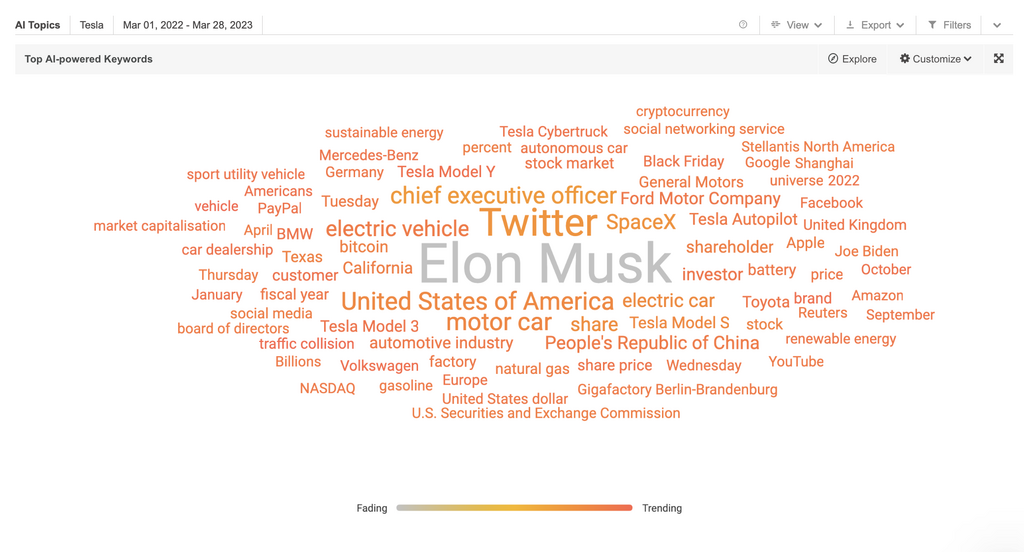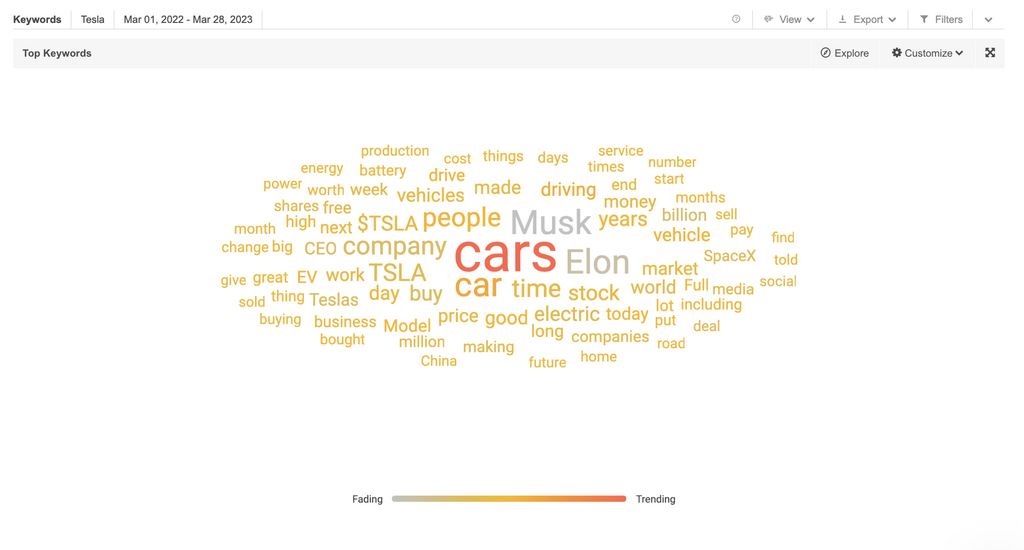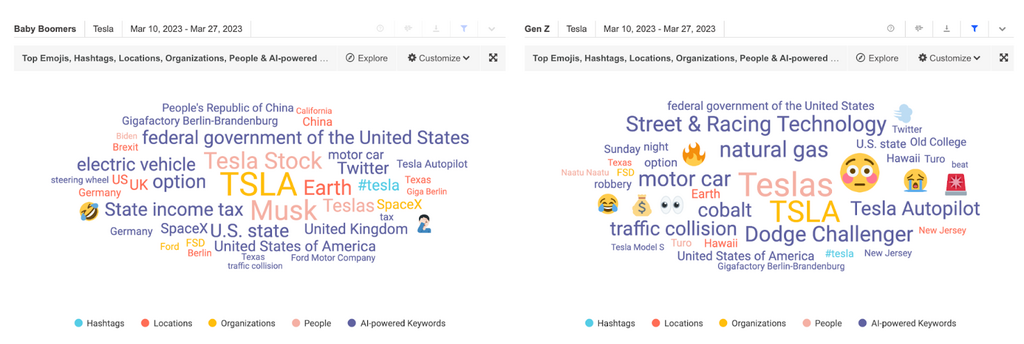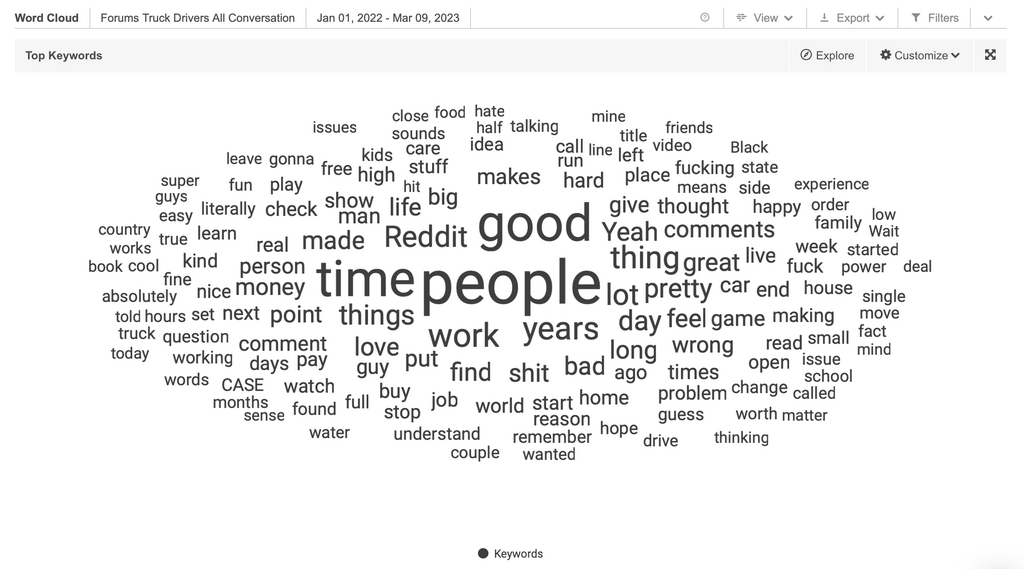Social media provides us with a huge amount of valuable data on consumer behaviors and opinions, but it can be hard to discover insights in messy, unstructured data. At Brandwatch, we’re using cutting-edge AI, such as GPT, to help cut through the noise and speed up time to insight.
AI is hitting the headlines these days as development of new models and capabilities are accelerating, and capturing the public imagination as the tech becomes more accessible.
At Brandwatch, we’re excited about what these developments will mean for the consumer intelligence and social media management industry, and how AI can be applied to solving new problems and take on time-consuming tasks.
While we are exploring new technologies every day, we’ve actually been working with cutting-edge AI, machine learning, and statistical models for many years, and we’re always looking for new ways to utilize our technology.
Our newest update takes our AI Search feature, which was the first in our industry to offer a way of searching relevant data on any brand or topic with a single click, and turns it around. Now you can ask our AI to look through any data set and search for all the potential entities (eg, social handles and websites mentioned in your audiences’ posts) it knows and show you what people are talking about.
AI Search, powered by GPT
Brandwatch’s AI Search can find relevant mentions of an entity you are looking for using a Generative Pre-trained Transformer (GPT). GPT is a type of language model developed by OpenAI that uses deep learning to generate natural language text, which can be applied in a variety of different ways from predicting the next word in a sentence to generating entire articles from a prompt.
Brandwatch uses GPT for its understanding of language and context to disambiguate mentions of anything you’re looking for. For example, by looking at the word ‘apple’ and the words surrounding it in a social post, GPT determines which ‘apple’ is being talked about:
- Apple, the fruit
- Apple, the record label
- Or Apple, the technology company
It can do this for anything that has a Wikipedia page, and uses the content of that page to understand the context in which an entity is usually talked about.
This makes searching in Brandwatch fast and easy. There’s no need to create a long and complex boolean search string to return relevant data. Plus you can combine AI search terms with boolean keywords, or image and logo search if you want to help the AI along, and build an even more advanced search.
Applying AI Search to Word Clouds
Now, in the Word Cloud component in Brandwatch, you can ask the same AI to look through your data and show which topics are most commonly being talked about.
This makes getting a quick view of what is “going on” in the conversations you have collected much easier. It helps you to discover key themes, competitors, events, or people that are being talked about in connection with your brand.
Compared to looking at common keywords, this provides a far more insightful overview and helps you discover trends that you wouldn’t have known to look for.
In this example, comparing Word Clouds to the conversation about Tesla, there are key benefits you can spot instantly with the new AI-powered topics compared to simple keywords:
- It removes most irrelevant keywords, which may be common but aren’t providing much context about the general topics of conversation. Words such as “people,” “made,” or “told.”
- It has detected specific entities such as the different models of Tesla being talked about, including the “Model 3,” “Model S,” and the “Tesla Cybertruck,” or competitors Ford and Mercedes.
- It has also surfaced related topics that aren’t directly related to the query, such as “cryptocurrency” and social networks.
Drilling into AI Topics
While this gives us a great, quick overview, the real value comes when we start to dig a little deeper. Brandwatch is so flexible, we can run AI topic analysis on all different segmentations we might want to explore. This makes understanding what is being talked about in different contexts even simpler and more insightful.
For example, we can use Brandwatch’s Ready to Use Social Panels of different generational groups to examine popular topics and stories discussed among them. Here we can see Baby Boomers talking more about topics related to taxes and a story about the Tesla factory in Berlin building 5000 new vehicles a week. Meanwhile Gen Z talks a lot more about the speed and performance of Tesla’s vehicles, and the topic cloud also picks up topics to do with sustainability, referencing natural gas used to generate electricity and cobalt used in battery production.
Discovering personas with AI
Where this AI-powered topic analysis really comes into its own is when you are looking at a particularly generic or broad data set. This is usually when it’s hardest to pull out common themes and insights.
A great example of this is when studying the conversations of a panel of authors. Even a specific group of people connected by common interests or characteristics will be talking about a lot of different things. How do you quickly pull out some interesting themes to better understand an audience, so you can create relevant content to reach them or to inform your strategy in other areas?
With Brandwatch you can create large social panels of authors based on how they describe themselves, who they follow, or the topics they have talked about in the past. Then you can query everything they talk about to create a complete ‘whitespace’ research data set on your key target audience’s conversations.
Here is an example of people who previously said they “own” or “drive” a truck on online forums. Let’s call this our “Truck Drivers” audience. If we look at the most common keywords this group uses, it doesn’t really tell us anything useful about who these people are or what they talk about.
If we analyze the same vast data set with AI topic extraction, we suddenly have a window into an online community that can tell us a lot more. This group talks about some topics you might expect, such as “motor cars” and “trucks,” perhaps “God” and the “United States of America,” but we probably didn’t expect “Shakespeare” to be such a commonly used reference.
This can spark new ideas about how we understand and engage with target audiences.
What’s next for AI in Brandwatch?
We are always exploring where these developments can be applied in new ways. Building on our GPT-powered AI Search and topic analysis, we plan to add this to more components and visualizations. We’re also exploring how to apply this technology to more languages.
We’re excited about the rapid advances in new AI developments and we are looking at ways to integrate open-source models, such as ChatGPT and others, to solve different problems across our product suite. For example, employing AI to suggest social copy or responses, summarize data sets with natural language, or create more flexible sentiment analysis models. As this technology becomes even more powerful and accessible, it is unlocking new avenues for innovation, speeding up the time to insight, and helping our users turn vast amounts of data into actionable intelligence.









